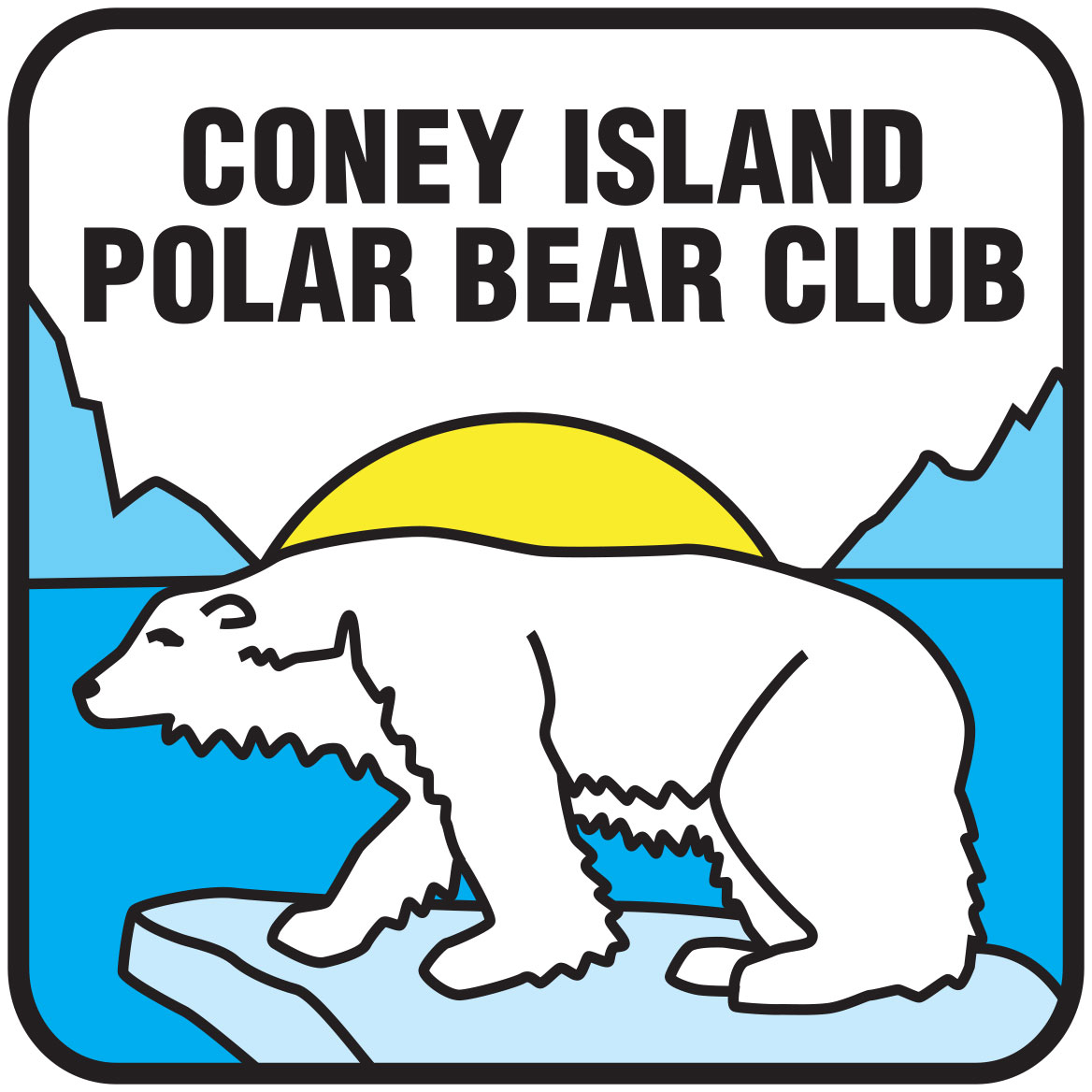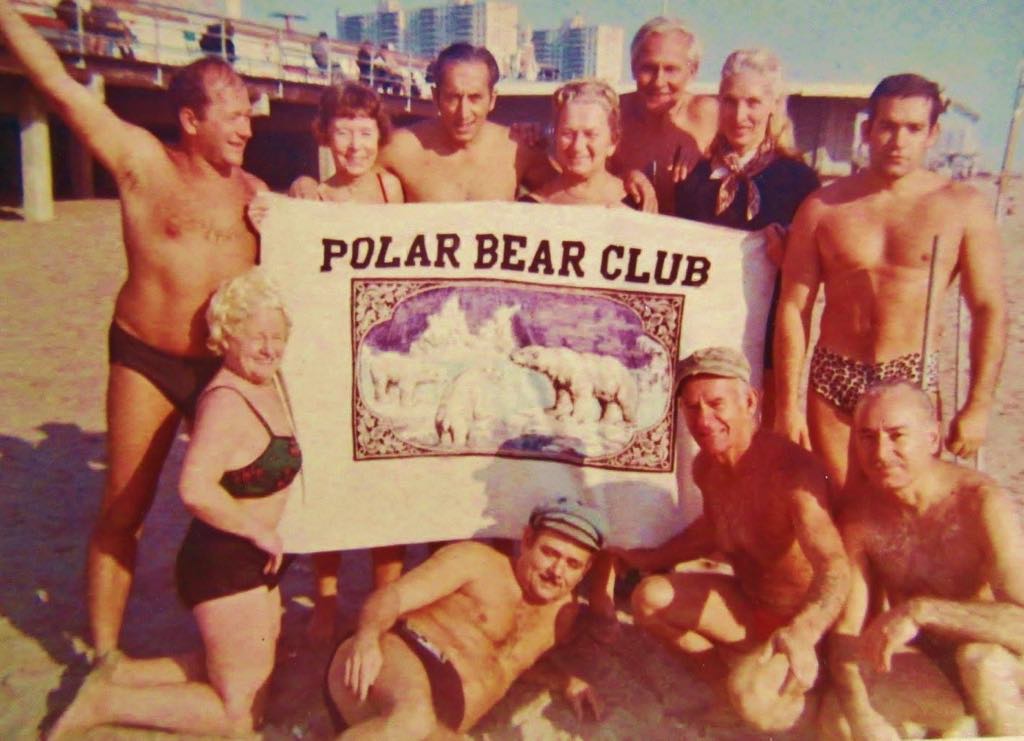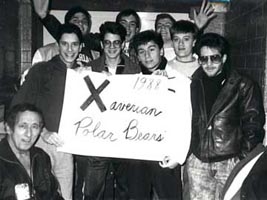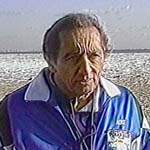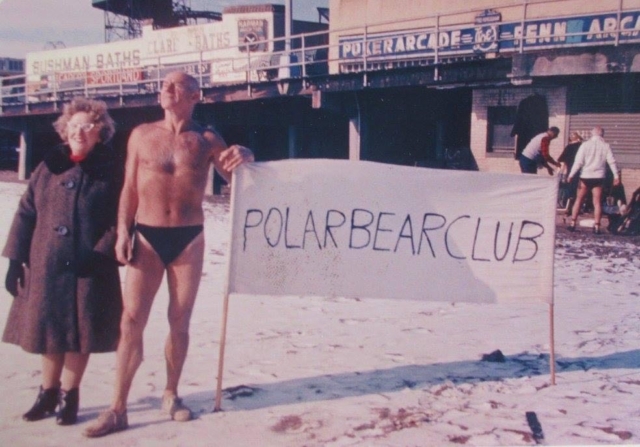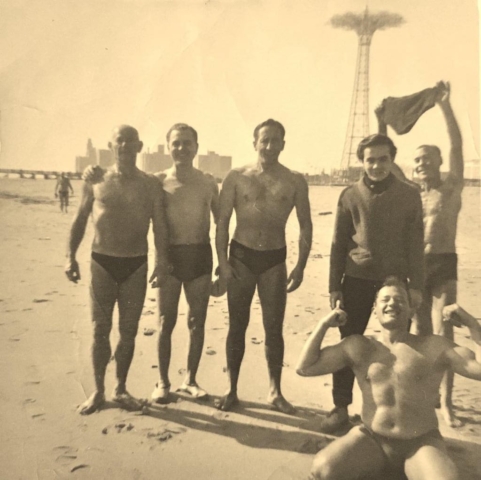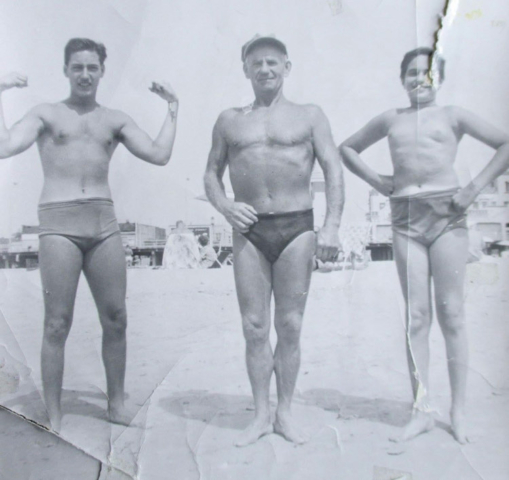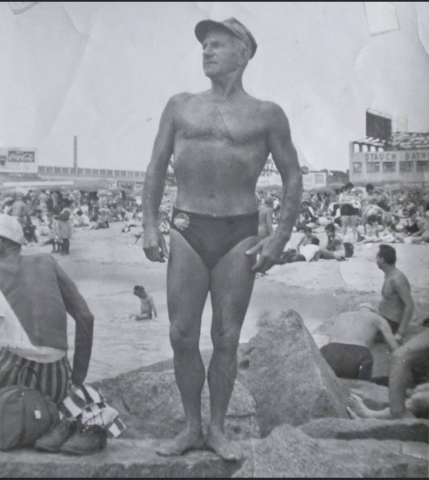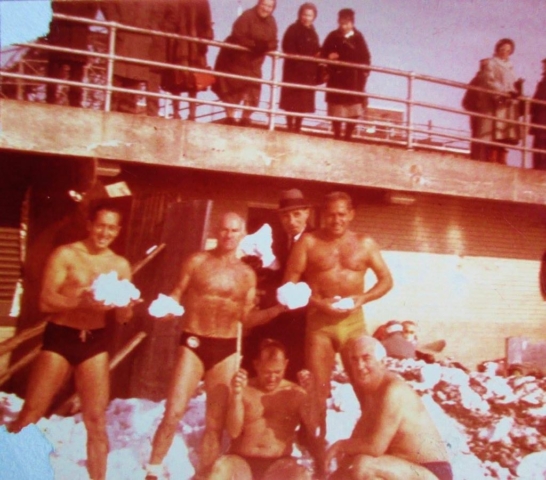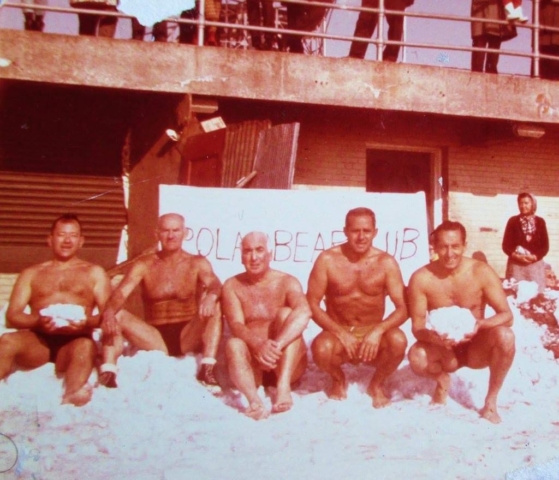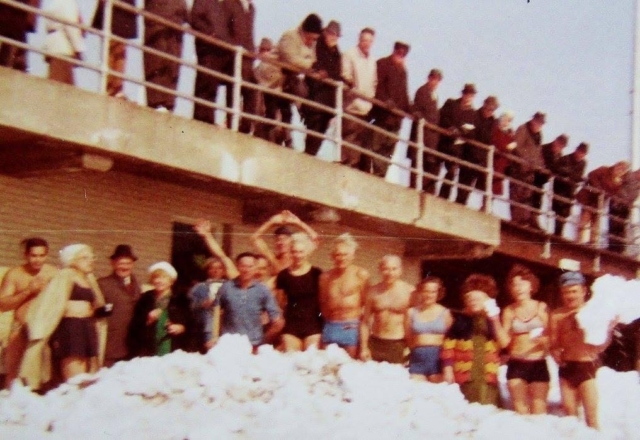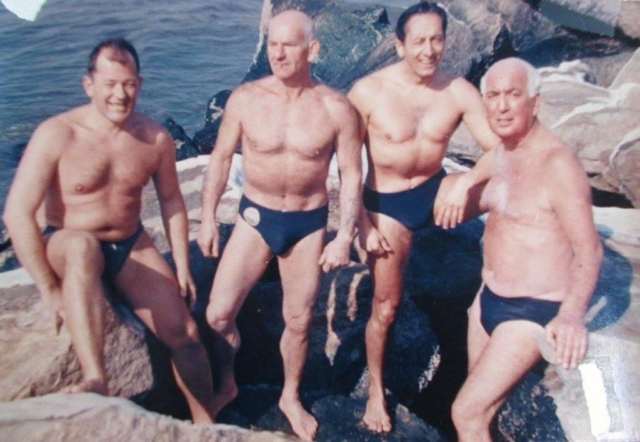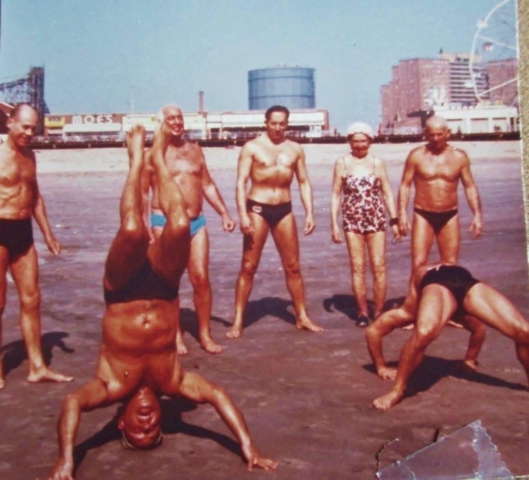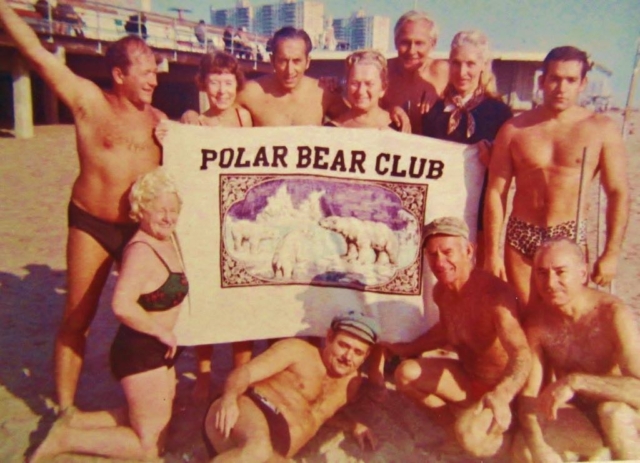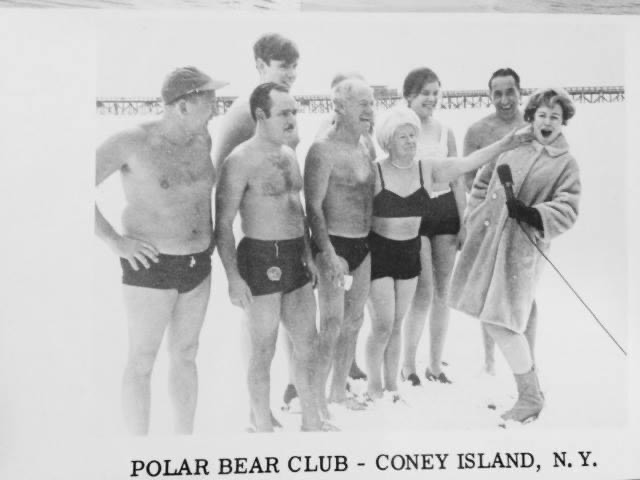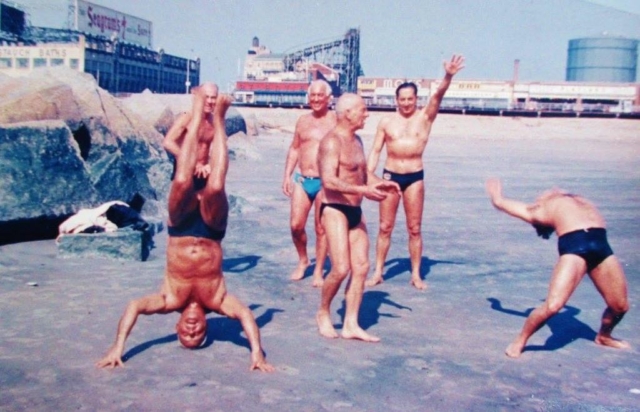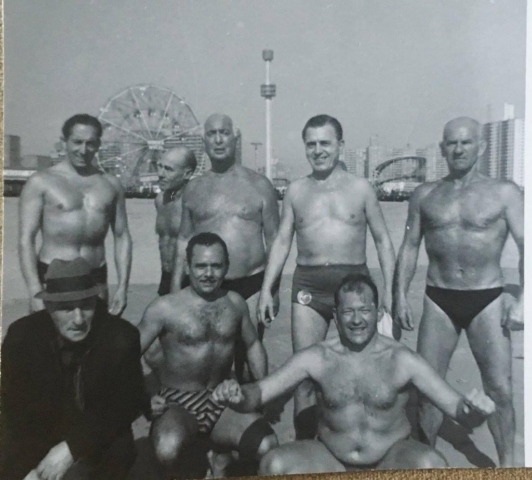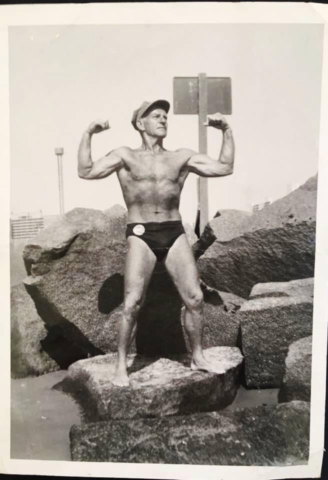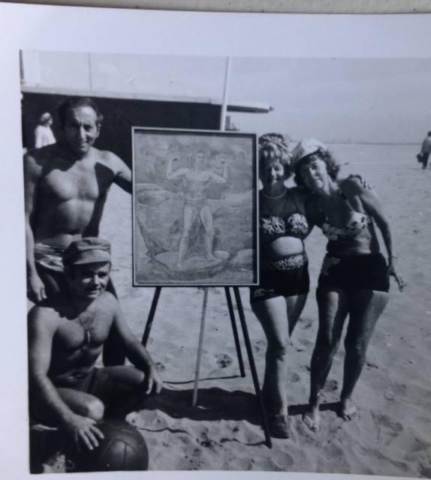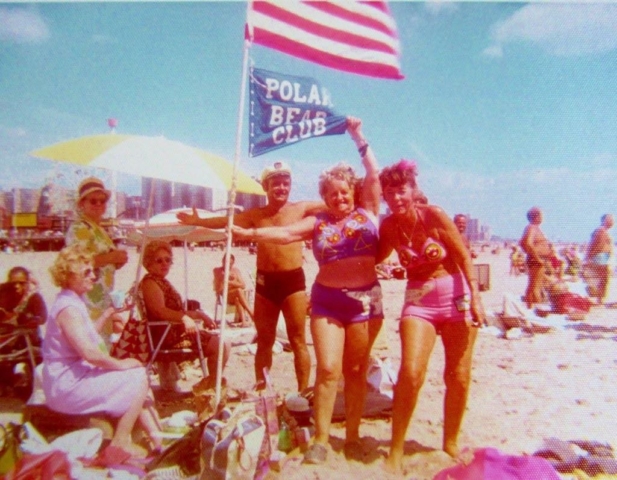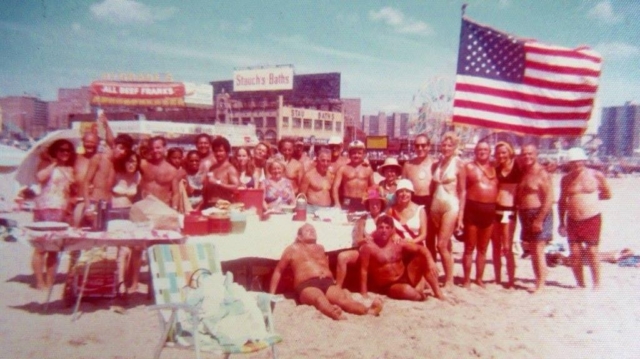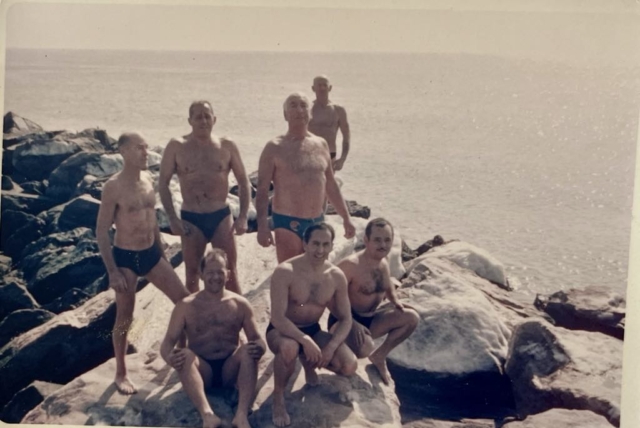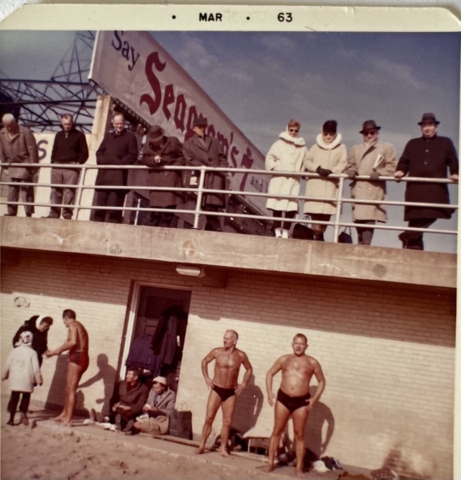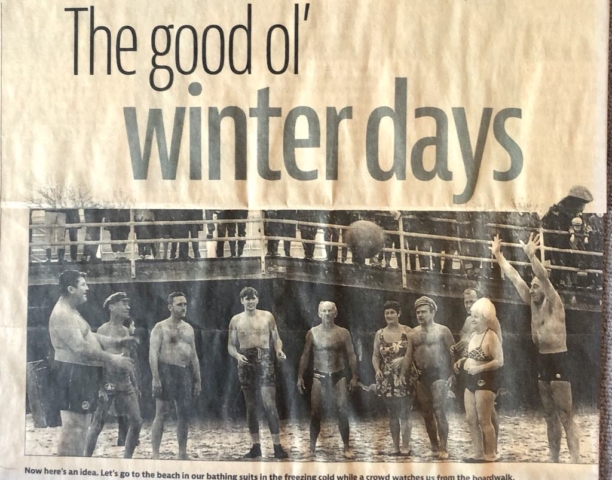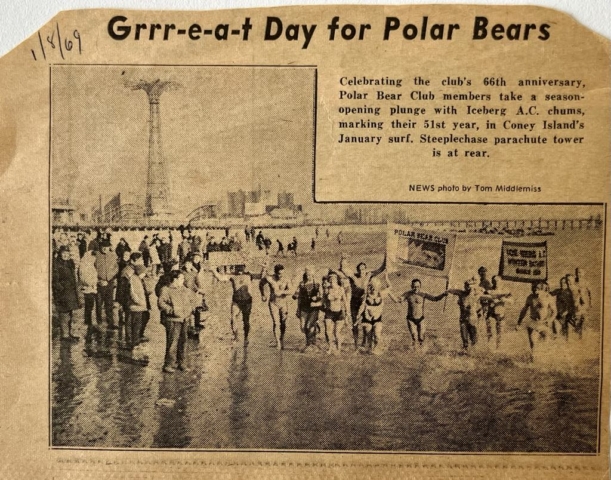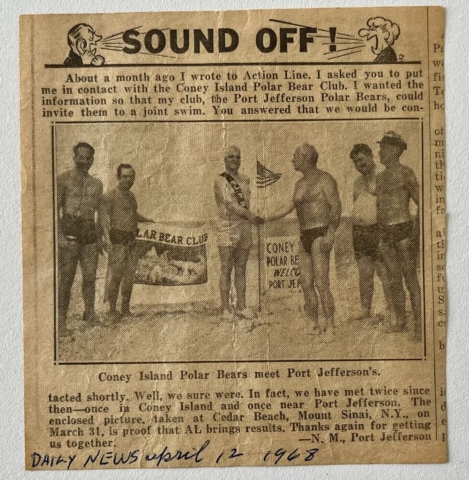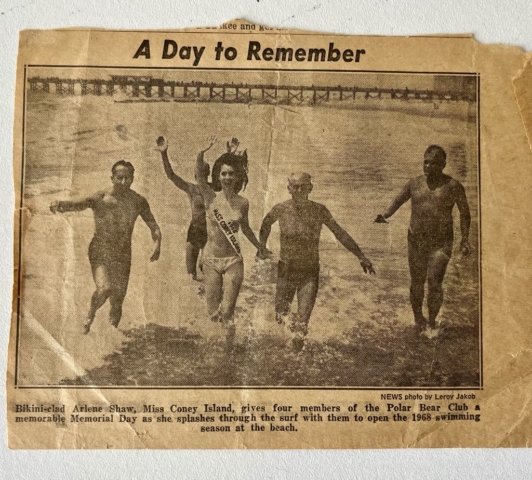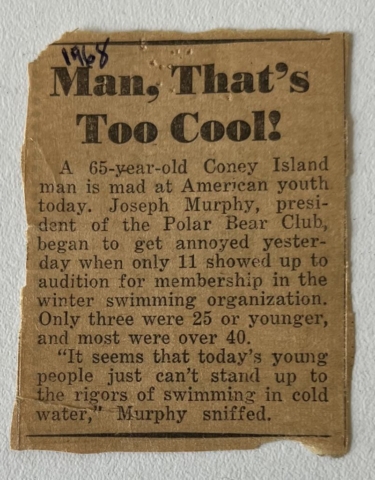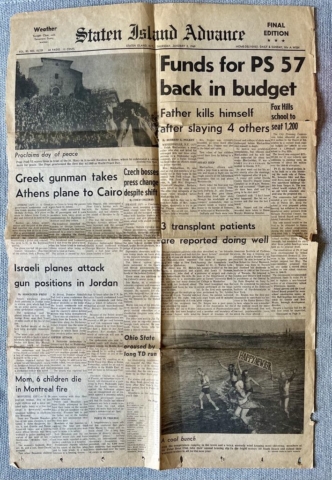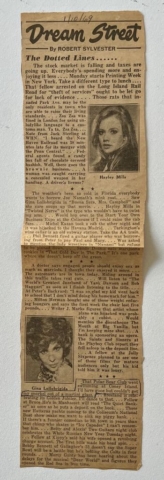Coney Island Polar Bear Club History
The Coney Island Polar Bear Club was founded by Bernarr Macfadden in 1903. While virtually unknown today, Bernarr Macfadden (1868-1955) was called the “Father of Physical Culture.” An early advocate of physical fitness, natural foods and physical exercise, he believed that “our bodies are our most glorious possessions, that health-wealth is our greatest asset . . . that weakness is truly a crime . . . that every man can be a vigorous vital specimen of masculinity: that every woman can be a splendidly strong, well poised specimen of femininity.”
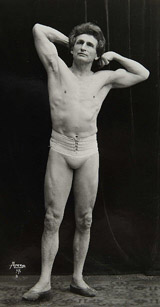
Although many considered him a “kook and a charlatan,” few people of his generation did as much to advance the cause of physical fitness, healthy eating habits and the natural treatment of disease. He authored over 100 books on his theories of health, sexuality and fitness becoming a millionaire publisher along the way.
Among his powerful and influential friends were FDR, Will Rogers, Shirley Temple, Clark Gable and Rudolph Valentino. It was his belief that a dip in the ocean during the winter can be a boon to one’s stamina, virility and immunity.
Among early Polar Bear members could be counted NYC Deputy Police Commissioner George S. Dougherty and Supreme Court Justice Crater, long famed for his disappearance.
Little is known about the Coney Island Polar Bear Club history from those early days. We are constantly on the lookout for photographs and stories from peoples’ grandparents.
One old photograph recently published in an article about us in Travel and Leisure Magazine (article titled “Cold Rush” December 2003) confirms that the Coney Island Polar Bear Club was very much active in 1947.
The Brooklyn Public Library has a number of photographs of the Club from the 1970s. Go to www.brooklynpubliclibrary.org and search for ‘polar bear’ in the Irving I. Herzberg Photograph Collection.
A particularly beloved president of the Polar Bear Club, Al Mottola, since passed away, was a charismatic figure and is still very much in our memory. Joining the Club in 1955, Al believed the cold water to be a cure for every disease known to humanity. It was Al who, we believe, began the tradition of blowing a conch shell to summon the Polar Bears into the water, a tradition recently revived by current members.
As recently as the 80’s, when the Polar Bear Club met under the boardwalk in a lifeguard station off of Stillwell Avenue with the permission of the Parks Department (before a beach reclamation project buried it) it was not uncommon to find Al and the old timers of that era playing a portable organ, singing songs.
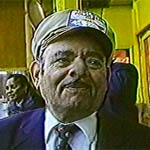
Another notable member, now deceased, was Pablo, who seemed to defy medical science with his ability to spend unconscionably long periods of time in the frigid brine and he never missed an opportunity to stand on his head in a snowbank. Pablo’s last request was to have his remains carried down to the Coney Island shore for his friends to bid him farewell.
The Coney Island Polar Bear Club led a somewhat nomadic existence through the late 1980’s into the 90’s. The former meeting place, a lifeguard station made available to us in the winter by the Parks Department and used by the Club for decades was buried under the sand when the beach level was raised.
For a few seasons the club met in an old above ground lifeguard station near 25th Street, “no man’s land” we called it, far removed from the Coney Island amusement zone and out of the public eye. Membership dwindled, often only five or six people would show up to swim each week. The president of the Polar Bear Club at that time seemed content to let the Club fall out of existence. He avoided any effort to attract new members or publicize our activities.
Then we moved to another lifeguard station in Brighton Beach, again far from the heart of Coney Island. In the 90’s we found ourselves back in the amusement zone, meeting and changing in a latrine trailer parked on the boardwalk. Dark days indeed.
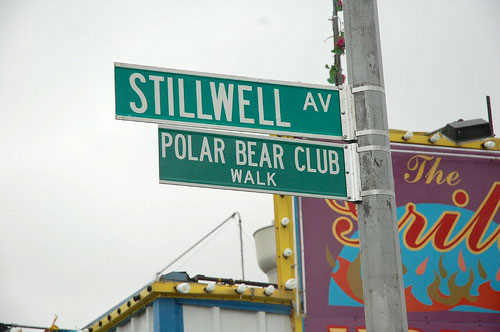
Starting around 2007, the Club elected a new more youthful leadership who sought to rebuild and grow the Club. We secured a new clubhouse in Education Hall of the New York Aquarium, and have been meeting there ever since. With heat and running water the Polar Bears have never had it so good. We gratefully acknowledge this gift from the Aquarium and hope to sustain a strong relationship with them into the distant future. The Club made itself more accessible to the public and media, built a website and listed phone numbers where we could be reached.
During this era, the Club vastly expanded its membership, from a dozen or less in the early 90s to approximately 150 today. Today the membership reflects the rich cultural diversity that is New York City.
It was around this time we started to actively promote and develop the New Years Day Annual Coney Island Polar Bear Club Plunge and turn it into a fundraising event. The public responded enthusiastically. The first January 1st event netted about $10K in donations. In about 15 years, that sum has increased to over $150K for a New Year’s event.
Over the years, the Club has raised over $1 million to support charities, many located in the Coney Island community. And all this is accomplished through voluntary contributions, the event remains free to all attendees. Recipient organizations include:
• Coney Island History Project
• Coney Island / Brighton Beach Open Water Swimmers
• New York State Marine Education Association
• NYC Parks Foundation / Kaiser Park Coastal Classroom
• Brooklyn Public Library – Coney Island Branch
Polar Bears in the Past
The following collection of photographs and newspaper archives are generously shared by the Galletta Family, whose legacy includes a current member of the Coney Island Polar Bear Club and ties to Joe Murphy, the Club’s beloved President from 1945 to 1970.
During his presidency, Joe Murphy was a charismatic leader and a well-loved figure in the community. Alongside his longtime love and fellow Polar Bear, Martha Grondski, he helped propel the Coney Island Polar Bear Club to global fame, with his charm and dedication making an indelible impact on the club’s rich history.
